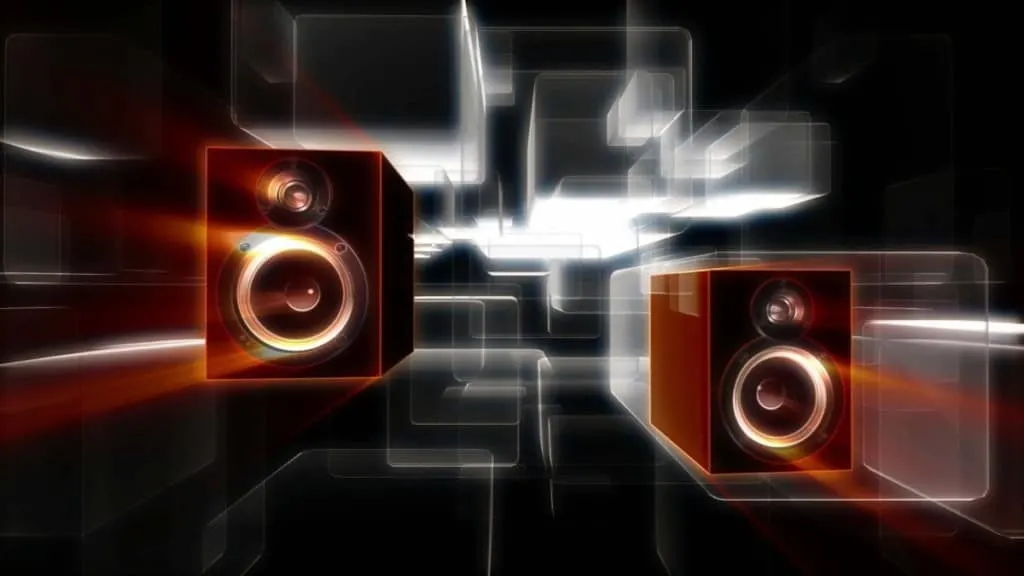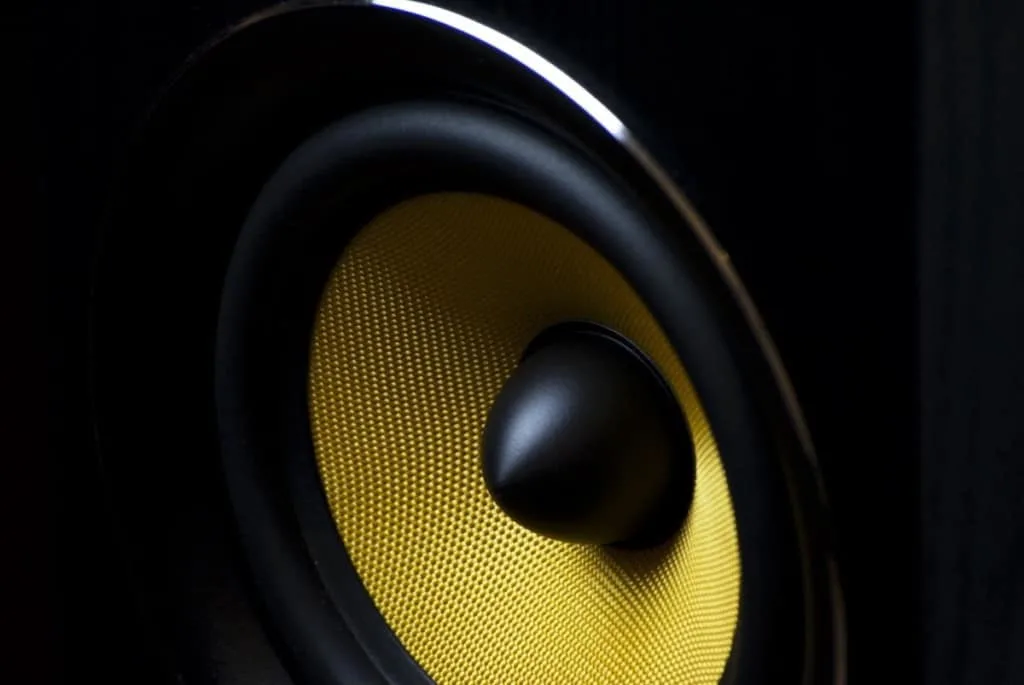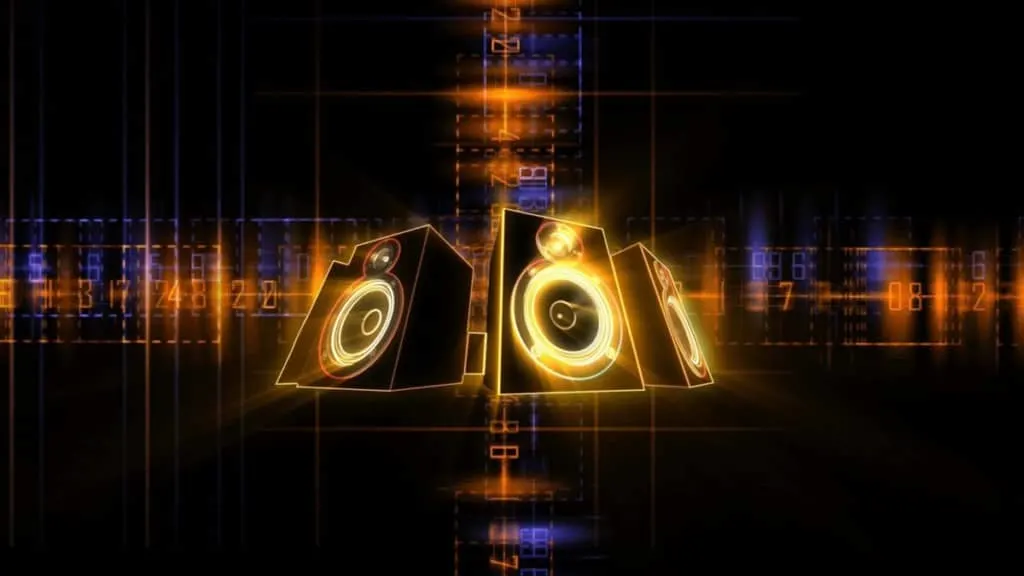If you are new to connecting up speakers and PA equipment one question that is often asked is “Can I connect a powered amplifier to active speakers”?
For example, you may have got yourself a pair of state-of-the-art sub-low 18” speakers and want to hook them up to your existing rig?
Don’t hook any cables up or do audio connections until you are finished reading this blog post.
So, can you connect an Amp to Active Speakers?
“Physically it is possible to connect an amp to active speakers, but it is ABSOLUTELY NOT recommended as potentially you will ruin your powered speaker and possibly your amp”, the golden rule is Power + Power = Disaster. Always remember passive speakers require a power amp and active speakers do not.
Take a look at this YouTube video on how NOT to blow up your speakers.
You are about to read everything you need to know to do it the right way. So, let’s take a look at how to plug in correctly and make those new speakers sound their best.
Are you ready to sound huge? Let’s get straight into it then!
What Are Active Speakers?
Active speakers or powered speakers are loudspeakers with amplifiers built-in.
This means that each active speaker can reproduce sound without the need for any kind of external power amp. Some people call them a 2-in-1 solution because they offer power and audio in the same package.
This difference in the design was introduced to the market in the 1980s for home applications, while the larger active loudspeakers for PA applications came along in the 2000s.
Nowadays it’s possible to buy all kinds of active loudspeakers for all the applications you can think of. The market has become so big and demanding that almost every big sound brand has a design to offer.
For an example of a pair of active speakers check out these best-sellers on Amazon.
- Check out my video that explains all you need to know about connecting power amps and speakers.
Please subscribe to the Stampsound youtube channel here. It’s free!
Types Of Active Speakers
There is virtually an active speaker of every type. Let’s take a look at the different applications they might have:
PA Systems
PA systems have seen exponential growth in the sizes and quality of the active speakers available in the market. You can buy anything from an 8” stand-alone speaker for a CEO announcement to an 18”, 3000-watt subwoofer to fit under the stage.
Take a look here to see exactly what an 8-inch active speaker looks like.
Also, in the world of live sound, the use of self-powered (Active) floor monitors made the life of many artists way easier than ever before.
Line Array
You must have seen line array PA systems hanging in more than one festival in the world, I’m sure of that.
They have the characteristic of being more powerful and yet smaller than traditional PA systems. These loudspeakers usually hang from each side of the stage and can produce the same or more power than traditional speakers in ¼ of their size. Mostly, all line array loudspeakers are active.

Studio Monitors
Studio monitors come in a wide range of configurations for different frequencies.
If you’ve ever sat in the chair of a big studio, you’ve seen that they put together the monitors depending on the size. For the lower frequencies, you have the further monitors with bigger sizes. When it comes to higher frequencies and mids, you have the smaller ones closer to your ears.
Mostly, these are active loudspeakers so that they remain as close to 100% flat audio as possible. Recording studios used to have power amps underneath the mixer console that would add noise to the signal; with active loudspeakers, noise is virtually non-existent.
There are many makes and models of studio monitors. For a good pair of active speakers to get started with I would recommend you take a look here on Amazon.
Active Speakers And Home Use
Home theatres with active speakers and Bluetooth connections can eliminate annoying cables in your living room once and for all. Also, self-powered (Active) speaker towers can be the perfect companion for old pre-amps and for streaming content straight from your phone or computer. Finally, there are a lot of active speakers with a built-in karaoke function, some cool lights, and even a rechargeable battery.
You can even take these around and have fun with your friends.
Active Vs Passive Crossover Speakers
Crossover is a word you are going to encounter everywhere on the internet as you research this topic.
A crossover is a fork in which the signal path divides, for example, the low frequencies go to the woofer while the high ones go to the tweeter. The main difference you have to know about passive and active crossovers is that the passive ones do not need power to operate. In fact, they use capacitors and inductors to direct the signal when it reaches certain values.
On the other hand, active crossovers distinguish and direct the signal before it hits the power amp and generates a more articulate, cleaner overall sound. Active speakers are way more expensive than passive ones and this is something to bear in mind when you choose which to purchase.

Benefits Of Active Speakers
- Compact & simple – Active speakers are a one-piece combo that can offer the same benefits as having a power amp and passive speakers. It might seem a very simple difference but believe me that after working 10+ years building sound stages for artists, the less gear you have to take, the better for all of those involved.
- ·Perfect match – One great advantage of active speakers is that the power amp and the speaker were engineered, designed, and built to be perfect for each other. There is no risk of doing something wrong and blowing something and it will always sound at its best.
- ·Shorter distances better audio – Some experts say that since all the components are inside the loudspeaker and there is virtually no distance from the power amp and the speaker itself there is no sound degradation and hence, active speakers sound better.
Disadvantages Of Active Speakers
- Heavy Enclosures – The first disadvantage that most people complain about is that the active loudspeakers enclosures are very heavy. This is absolutely true; they hold the power amp and the speaker, so they should weigh more than a passive speaker.
- Two Cables Instead Of One – Because each active speaker needs electrical current to work (110 or 220 depending on the country), you have to feed them with two cables, making the whole process a little more complicated.
- More Difficult To Replace – If you have been to a live show of any style and genre, you´ll know that things can eventually blow up. If you happen to blow up a power amp, you can have a backup right next to it. If you happen to blow up a passive loudspeaker, you can just plug in another one right away. Blowing up an active speaker can be mayhem; you have to replace the whole thing.

What Is A Power Amp?
What does a power amp do? We all know the answer to this question in a rather intuitive, practical way, but most of us aren’t really sure of what happens inside. What a power amp does is to take the electrical current (AKA sound signal) sent to it and amplify it (add more current) so it can be played through speakers at a volume that is suitable for an audience.
Power amps can be a stand-alone piece of gear or are also commonly found inside powered mixers.
A popular power amp to check out is the Behringer Nx1000D
Here’s an overview of the NX1000D.
Power + Power = Disaster (The Golden Rule)
So, this is the part where it gets tricky; you have power in your active mixer and power in your active speakers. What happens if you plug power over power? Will the power multiply, will you blow everything up? well, no but you will indeed blow up one or maybe both pieces of equipment.
- This is a golden rule to remember when working with sound: you never plug a power amp into an active speaker.
What happens is that the excess of current coming from the powered output reaching the input and getting the extra current from the loudspeaker amplifier can cause it to blow up. If you don’t want to fry your brand-new acquisition or the active mixer you were plugging it into, then always follow the golden rule: POWER + POWER = DISASTER
Take a look at this informative YouTube video on active and passive speakers.
The Right Way To Connect A Power Amp To Active Speakers
Don’t be sad just yet, you didn’t spend that money in vain; there is a correct way of doing it. In fact, there are several case scenarios to do it right, let’s have a look at the most likely two:
- The mixer has more than one output (Great News)
If the active mixer you are currently using features more than one output, then you should go get the manual and
read it to see if there are any balanced, not amplified outputs in it.
Most modern consoles will have an UN-amplified line out that you can plug into your active speakers.
If you happen to have an active sub-woofer, for example, it will amp all the low frequencies while you can use the mixer power for the mid-range. Also, some mixers will have amplified outputs for the front and some line outs with no amplification for the monitoring (internal audio for the reference of the band or DJ).
The Mixer Is Passive
This is the best-case scenario because if this happens you can simply go from the mixer to the power amp to feed the passive speakers and to the active ones so they can do it by themselves.
This is the best-case scenario because you will be feeding everything from the same mixer and once you set each volume to be balanced (power amp and active speakers), then you can just use it as you do regularly and get the full power of the power amp for the passive speakers adding some extra oomph with the, for example, active subwoofer.
For a great mixer with lots of inputs and features check out this Behringer 12 XENYZ 1202FX
Take a look at all the cool features and connections here.
Connecting Active Speakers Using SpeakOn Cables
You will need to use high-quality connections for various reasons when connecting active or passive speakers. I have written an informative article on why it is important to use SpeakOn cables here
Conclusion
Active speakers are a great invention that solved a lot of the problems sound people had for many years. Although they are great, if you happen to be not so knowledgeable about it, you might accidentally blow something. I hope this article has eliminated that possibility!
Now that you’ve read all you need to know about power amps and active speakers it’s time to make the decision on which connections you need and make it sound amazing.
I hope this article helped protect some of your much-loved equipment and always remember the golden rule Power + Power = Disaster.
